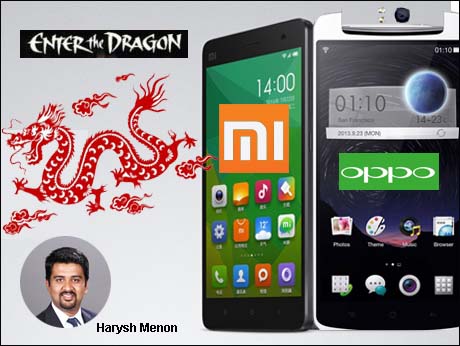
Harysh Menon, a Class of 2015 student at the Indian School of Business (ISB), assesses the impact of Chinese handset brands on the Indian market
Earlier this year, Counterpoint Research’s latest findings indicated that Samsung had lost its position as India’s top mobile phone vendor to Micromax. See Live Mint story. In the overall mobile phone market (smartphones + feature phones), Samsung regained the lead from Micromax in the next quarter, but it has been a ding dong battle
Micromax along with Karbonn, with its line of inexpensive but powerful phones have been the darlings of the Indian smartphone story. But, there is one country that does inexpensive better than most- China, and it has its sights set firmly on India.
India is one of the fastest growing smartphone markets in the world. Smartphones have powered the Internet revolution in many of the Tier 2 and 3 cities in India. And one of the primary reasons for that has been the availability of inexpensive but effective devices.
The problem with being the leaders in a low cost segment though, is that you can only maintain that position as long as there isn’t someone who can undercut you on price. Unfortunately for the likes of Micromax and Karbonn, Chinese firms like Xiaomi and Oppo have started to enter the Indian market, to try and do just that.
Xiaomi with its Mi series and Oppo with its Find series of phones are popular the world over for constantly outdoing high-end phone manufacturers in terms of specifications at much more reasonable prices. They both also feature mid-range phones like the Redmi 1S and the R1which are more likely to directly impact the likes of Micromax and Karbonn.
Both Xiaomi and Oppo are taking markedly different approaches to the Indian market though. Oppo is taking the more traditional route of advertising with celebrities like HrithikRoshan and SonamKapoor, becoming the title sponsors to the Champions League T20 Tournament and sponsoring shows like the latest Season of Big Boss. Xiaomi meanwhile, is taking a more radical approach with the use of online flash sales.
Motorola first popularized online flash sales through its sale of the Moto X and the Moto G through Flipkart. Xiaomi followed the same route and had flash sales for the Redmi 1S and the Mi3, both of which sold out in 4.2 seconds and 2.3 seconds respectively. While these flash sales help create a buzz, Xiaomi has actually been facing some flack from the market demanding that they produce more phones to cater to a larger number of people. But, in the world of problems, people complaining that they need more of your product, is not such a bad problem to have.
Things are not all rosy for the Chinese contingent though, both Xiaomi and Oppo face growing questions of service infrastructure to support their phones. Micromax and Karbonn, though not as prevalent as Samsung, Nokia and Sony, still have enough of a presence to not have to deal with skepticism any more from the Indian consumer. Xiaomi also faces the problem of not having enough devices in the open, to make a real impact in the minds of the general consumer, due to its use of flash sales.
The Indian consumer, especially the early adopters and the technology enthusiasts, appreciate good value. If a device is giving them similar (if not better) specification at a cheaper price, they will buy the device simply for the value for money it provides. But, moving beyond the early adopters is where the likes of Xiaomi will face problems. Xiaomi, while well known in technology circles, is otherwise still a relatively unknown entity in India and the general consumer is unlikely to buy a device if the maker is a completely new entity to him or her. Questions regarding legitimacy of the brand and quality of the product will arise. Xiaomi will need to expand beyond just online sales and actually have their devices in brick and mortar stores, in order to really tackle the Indian market.|
Then there is the problem that Google poses. Its not just Xiaomi and Oppo that have been looking to the growth rate of mid and low-end smartphones in India, with a growing interest. Even Google at its latest I/Odeveloper conference, launched Android One, the standard created by Google and targeted at first time smartphone buyers. Micromax, Karbonn and Spice have all jumped on the Android One bandwagon and launched their respective smartphones at very cheap prices.Both Xiaomi and Oppo will have to decide whether it is lucrative for them to follow suite.
Only time will tell if the likes of Oppo and Xiaomi are just a flash in the pan or if they can affect the Indian market in the long run. Xiaomi and Oppo might have piqued the interest of the early adopters for now, but they still have some ways to go before they pose a threat to the likes of Micromax and Karbonn. Nov 21 2014